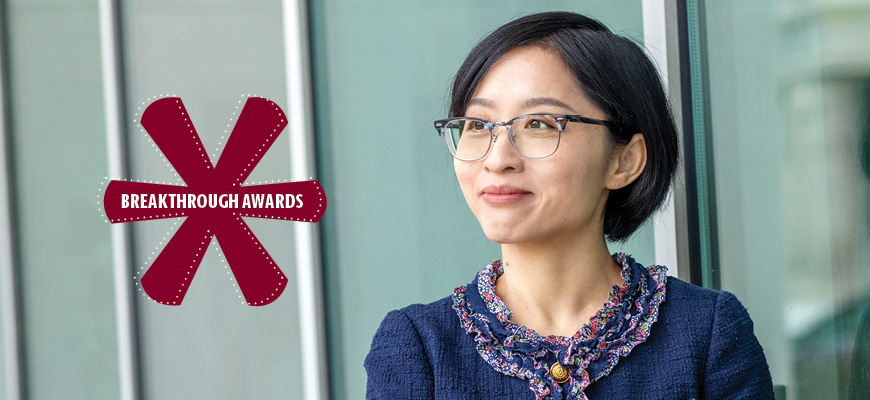
Breakthrough Star: Lingyu “Lucy” Yu
Mechanical engineering professor looks after ‘health’ of structures
Posted on: July 13, 2020; Updated on: July 13, 2020
By Megan Sexton, msexton@mailbox.sc.edu, 803-777-1421
Mechanical engineering associate professor Lingyu “Lucy” Yu describes her work in nondestructive evaluation and structural health monitoring as being something like a medical doctor.
“But my patients are not human. They are structural components,” Yu says. “They are the components that make up things like the walls in a building, the fuselage in an airplane or the girders in a steel bridge.”
Yu researches ways to help ensure the components of these materials stay strong and safe. And her work must be done in a nondestructive way, not harming the components as she checks to be sure they’re holding up well.
Being an engineer is not all about sitting in front of the computer. If you want to make an impact you have to communicate with others, to let others know what you have done.
Lingyu “Lucy” Yu, mechanical engineering professor
“We need to make sure the structure does not have any defect or damage that would adversely affect the overall system performance,” she says. “The earlier they are detected, the better, even when the defects are not visible to the eye. There shouldn’t be holes or cracks in metals or delamination or wrinkles in composites. But we don’t want to cut open a piece to see if there are any,” she says.
Yu’s work focuses on using guided ultrasonic waves to study structural components and then analyzing the data to see what it reveals about structural integrity.
“Being an engineer is not all about sitting in front of the computer,” she says. “If you want to make an impact you have to communicate with others, to let others know what you have done.
“So I started sharing my knowledge and my results with other people during my post-doc. I found a faculty position would allow me to push that interest. I continue my overall work in that direction, but in the academic environment. That’s a good platform for me to share knowledge and make a broad impact. “
Since joining the mechanical engineering department in 2010, she has garnered 19 projects with more than a $2.5 million share of funding by agencies including the Air Force Office of Research Laboratory, the Office of Naval Research, the Nuclear Regulatory Commission, Department of Energy, NASA, National Institute of Standards and Technology and Boeing. Those projects have been aimed at developing “state of the art visualization-based damage detection techniques for civil, mechanical and aerospace applications,” says Jamil A. Khan, professor and chair of mechanical engineering.
In the nuclear power field, “she has been a leading force for the advancement of ultrasonic based nondestructive evaluation (NDE) promoting the safe operation of nuclear power plants and the safe and economical storage of spent nuclear fuel,” says Travis Knight, professor and director of the university’s nuclear engineering program. “In addition, her research is leading to new knowledge and understanding of laser ultrasonics that will have broad application beyond the nuclear energy field.”
Yu has published 39 referred journal articles, 80 conference papers and two book chapters. Her work, “Guided wave phased array beamforming and imaging in composite plates,” was honored in the Elsevier 2018 virtual special issue on Women in Physics, featuring papers authored by outstanding women scientists in high-level physics publications.
“(Being recognized) by this special issue is an important milestone in my career that pushes me to go further beyond being a researcher but also being an example to my fellow women who are underrepresented in the STEM fields, including mechanical engineering,” Yu says.